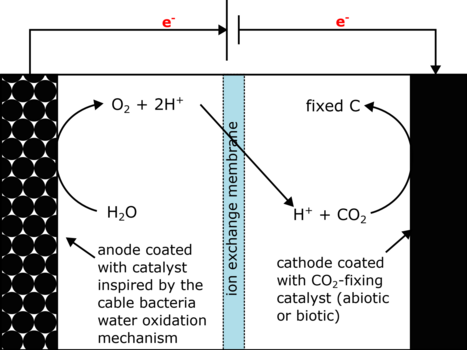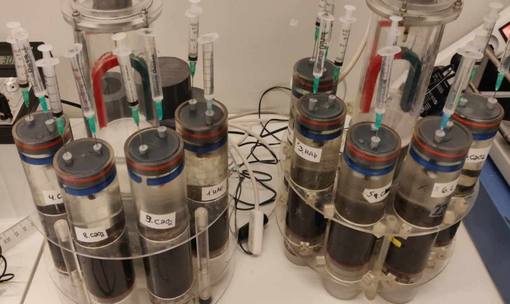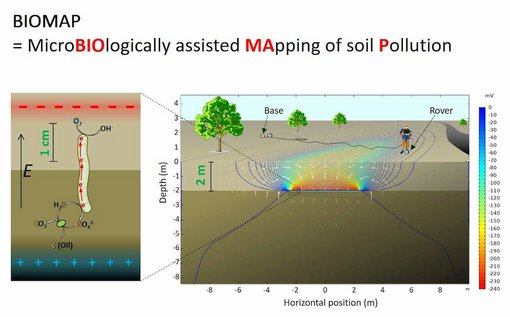
Cable bacteria are centimetre-long, filamentous, multicellular bacteria present ubiquitously in freshwater and marine sediments, and participate in long-distance electron transfer by coupling the oxidation of sulphide in anoxic sediment to the reduction of oxygen. Cable bacteria possess an internal electric grid, enabling them to transport electrons over centimeter-scale distances.
This project aims to inspire novel methods to cultivate cable bacteria, besides also offering other applications like bioremediation and biosensing. The physiological possibility of dark oxygen generation by cable bacteria in anaerobic sediments will also be explored, that would enable the use of cable bacteria as intermediates to convert any aerobic microbe into an electrogen. This mechanism might potentially uncover an unknown mode of oxygen production and lead to a new understanding of oxygen transport through the oxic-anoxic interface.

CEM researchers are studying the metabolism and water-oxidizing capabilities of cable bacteria to develop more efficient methods of CO2 reduction. The group have dicovered a novel mechanism in cable bacteria for H2O oxidation in the conductive fibers from the cells’ periplasms. They are studying whether this novel mechanism could inspire a new type of biomimetic catalysts for use in CO2 reduction technologies. Their project aims to investigate how this reaction works in cable bacteria by analyzing the protein structure and function of the catalytic water-splitting site.

Many water bodies suffer from eutrophication due to excessive nutrients, leading to massive algal growth, anoxic waters, and bottom sludge. To mitigate these effects, a new approach by Söll GmbH involves using granulated calcium peroxide to induce aerobic oxidation of organic matter. This research project aims to test if cable bacteria can enhance the effect of calcium peroxide by propagating its effect deeper into anoxic sediment. If successful, we will explore methods to combine cable bacteria with calcium peroxide to improve lake restoration efficiency.

In this collaborative project called BIOMAP, researchers, the business community and government agencies and institutions utilized electrical signals from soil bacteria to map soil-contaminated sites in Denmark. The Innovation Fund Denmark has invested nearly 12 million DKK in the project, which has made mapping of soil contamination quicker, cheaper and kinder to the environment.
When standing on a contaminated site, it is often difficult to determine exactly where the contamination lies. In Denmark alone, the Regions and private owners spend about 250 million DKK annually in studying and mapping soil contamination of Denmark's approximately 35,000 contaminated sites.
In this project, scientists and engineers developed a new and inexpensive method to replace some of the traditional – and most often costly and time-consuming – drilling and chemical analyses used today to map soil contamination.